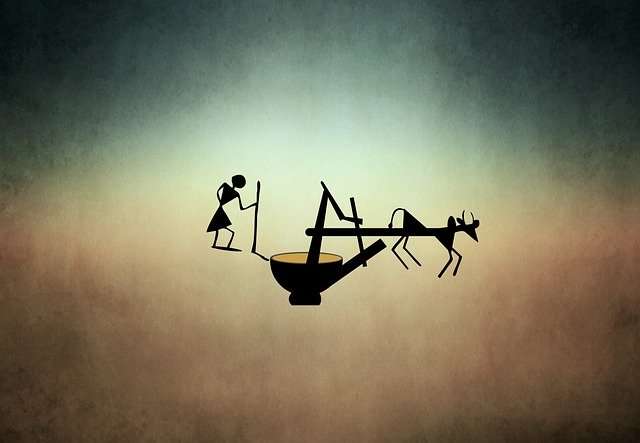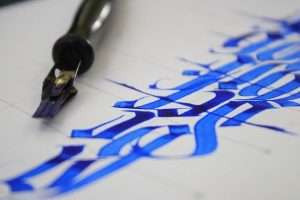Watercolour is easy when you have the right set up. There is no need to be afraid of watercolours, it can be a very rewarding medium if you understand the basics.
You will find lots of tips and tricks in this blog about the basics of watercolour painting, along with hints and tips for painting with watercolours.
You will also find lots of posts about my own paintings in watercolour. I sometimes post about my artistic process and some of the problems I faced while painting. I hope to share some of my experiences and help you learn from them.
Watercolour paintings always look stunning and are relatively easy to paint. There are many reasons why so many people like this medium. Watercolour paintings are a great way to create colourful and unique art.
The following article provides you with some useful tips for painting with watercolours.
1. Choose the right brush:
When watercolour painting, you need a good brush for the job. Cheap brushes will shed their bristles and the bristles will be all over your artwork. You can use short-haired brushes for washes and long-haired brushes for detail work. Use soft brushes for wet washes and hard brushes for dry brush effects.
2. Go easy on the water:
Water is a good medium but it also makes the colours run if you put too much in it. You might not notice it happening on your paper, but look at your painting upside down and you will see that some of the water has seeped through onto your painting surface. Always use as little water as possible to get good results out of your painting session.
3. Don’t try to mix too many colours on your palette:
If you have more than three colours on your palette, chances are there will be some mixing together when you add more water or paint
When you first start painting with watercolours, it can be quite daunting. You may have tried a few painting classes or workshops, but you still feel like you’re lacking some vital knowledge. You may have bought a watercolour set, but have had difficulty using the colours in the paints to create certain effects. Perhaps you’ve been trying to paint your subject, and nothing seems to be working out.
You don’t need to worry; anyone that has ever painted with watercolours probably felt exactly the same way as you do now! Watercolour painting is such an accessible art form that it’s easy for new painters to start to feel overwhelmed by the amount of information available, and this can make it seem like it’s too difficult for them. However, if you put the advice in these articles into practice in your own paintings, you’ll soon see that watercolour is an accessible medium that can help you build your skills in a fun and rewarding way.**
I hope you’ll find this blog helpful in improving your watercolour painting skills. I’ll be sharing my thoughts, tips and experiences in the hope that they will benefit you.
I’m a professional fine artist working in watercolors. I also teach watercolor workshops and provide private instruction. If you’d like to learn more, please visit my website: www.artstoreonline.ca .
I’m looking forward to sharing my passion for watercolor painting with you!
Here are a few of my favorite tutorials to get you started:
About Watercolour
Watercolour & Gouache
Essentials for Beginners
Painting a Still Life
Painting a Landscape
Art stores are a great place to buy supplies for your painting projects. Watercolour is an easy and fun medium to work with. As the popularity of watercolours has grown, art stores have expanded their selection of paints. You can choose from a wide variety of colours and brands. To make your shopping easier, here are some tips for buying watercolour paints.
Lining Up the Paint
There are many different brands of watercolour paints available in most art stores. The most popular brands like pan or tube have different lines that offer a range of colours and price points.
Different Types of Paints
Watercolour paint comes in three forms: liquid, pan and tube. Liquid is applied with a brush and dries quickly, while pan allows you to control how much paint is loaded on the brush with a palette knife. Tube is convenient if you want just small amounts of paint and it has a longer shelf life than liquid or pan paints. While all three forms offer advantages, tube is usually the most expensive option for watercolour paint.
Tubes or Cans?
Tubes are handy for small amounts of paint but there’s more waste than with cans because you need more paint for each colour when using tubes. Cans are more economical in this way but
Watercolors are easy to use, even if you’re a complete beginner. The main thing is to keep it simple, and that’s what we’ll do today.
First of all, we should choose our colors. I prefer to use tube paints rather than pans or blocks of watercolor because they are easier to handle. If you want to use pans or blocks, you can mix the paint with a little water on your palette and then add water until you get the consistency you want. For a more detailed guide on mixing your own watercolors, see my article on how to use pan paints.
Tubes have their down-side too – they cost more and produce more waste – so there’s no one “best” way to paint with watercolors. Pans and blocks are fine for practicing and studying painting techniques too, provided you can find good quality paints (which is getting easier these days).**
The antique Chinese watercolor paper is the perfect base for the vibrant, translucent colours of watercolours. The paper has a beautiful texture and is ideal for many different types of watercolour painting techniques.
The following are four popular Chinese watercolour painting compositions:
1. Waterdrops on Lotus Leaf
2. Lingering Snow on Pine Tree
3. Floating Clouds and Flowing Water
4. Landscape with Bamboo, Plum and Flowers
The first composition is a classic theme in Chinese culture. It is an image taken from nature with no additional human element added to it. The white lotus leaf symbolizes beauty, freshness and purity; the waterdrop represents loneliness and sorrow; together they represent all the pure emotions that human beings have experienced throughout history and at different times in their lives, such as pure love, deep sadness and the sense of ‘aloneness’.


